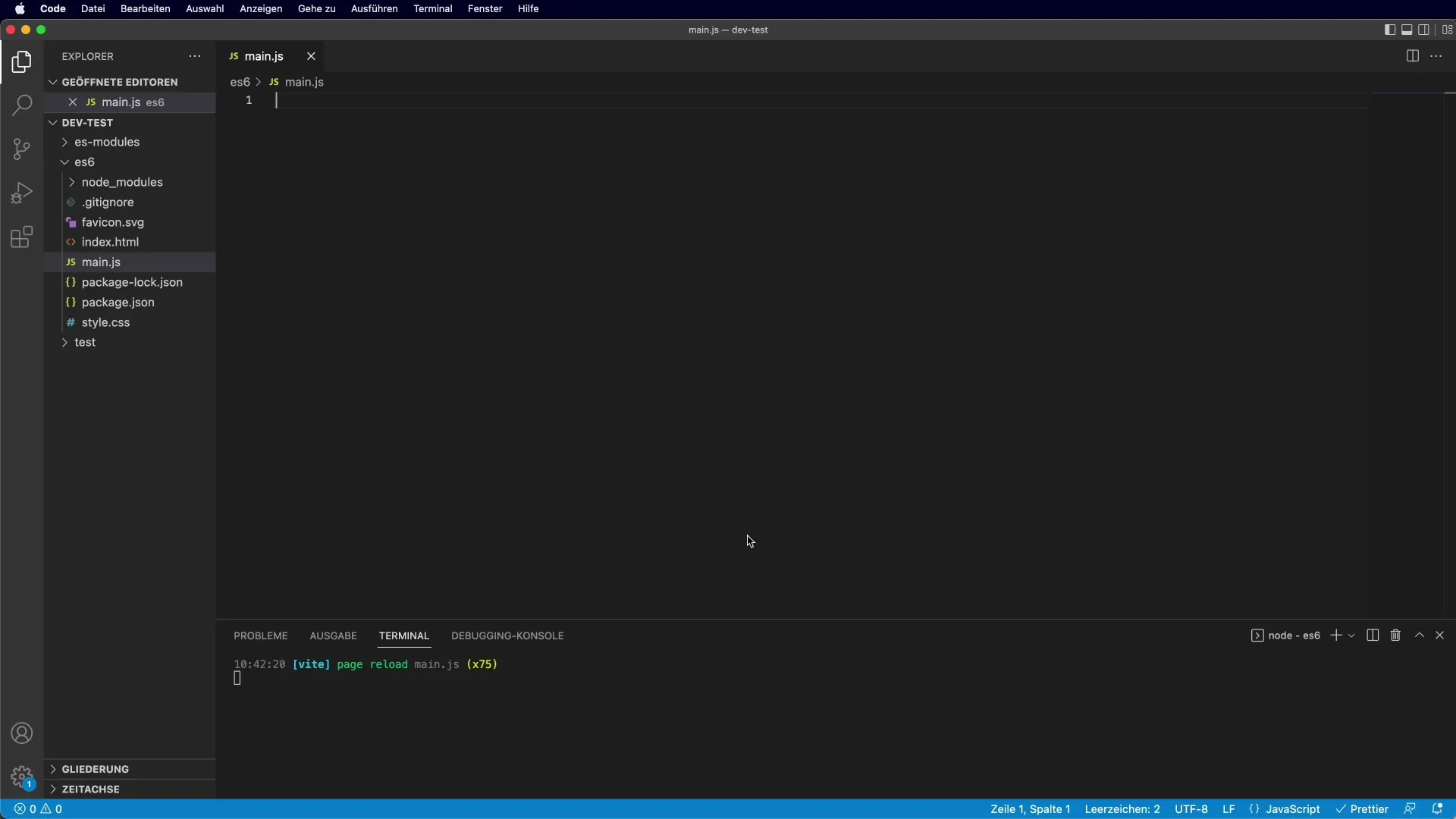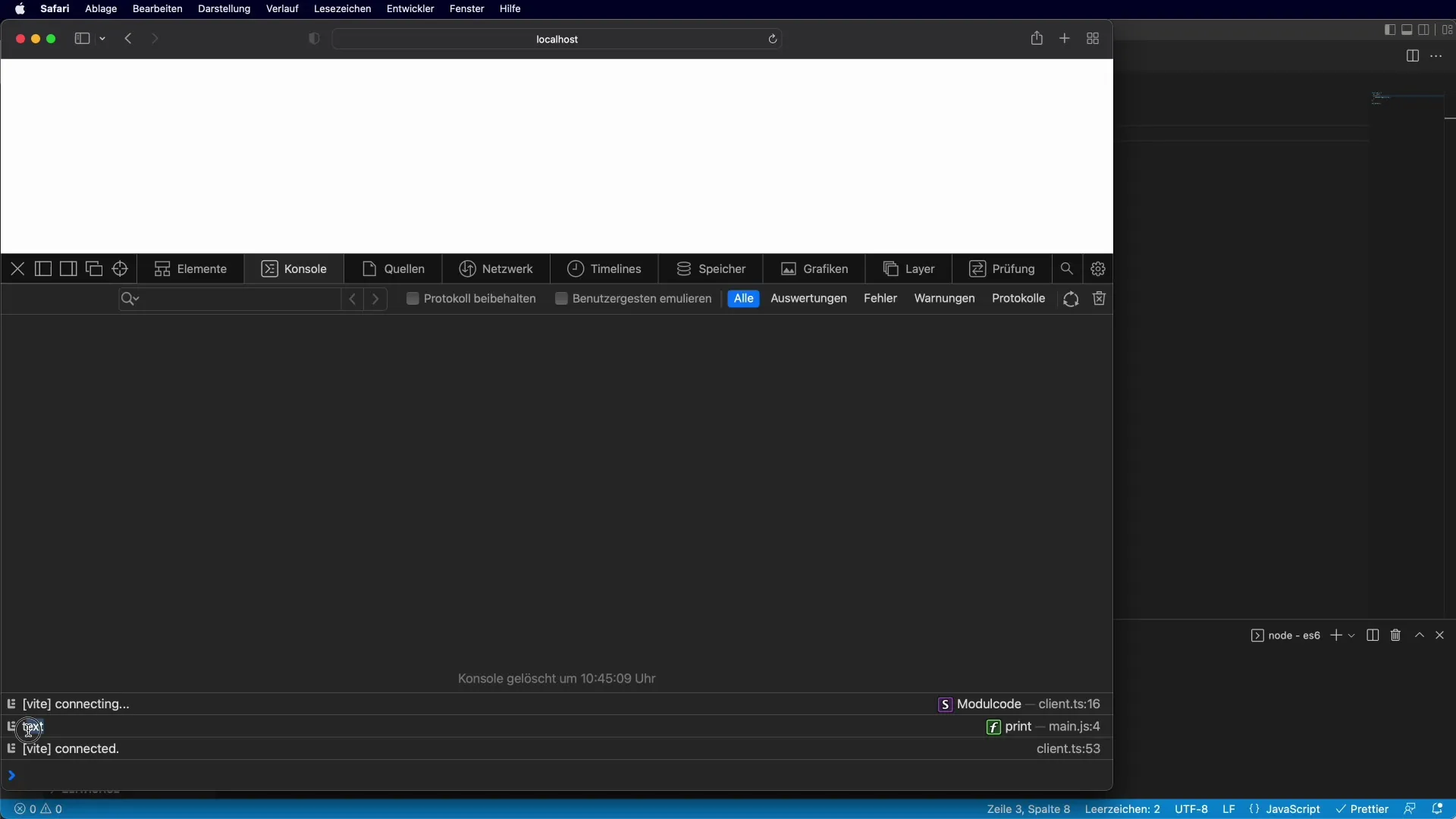The management of functions within object literals in JavaScript has significantly simplified with the introduction of ES6. Instead of the long and cumbersome function keyword, you can now use a much more concise and readable syntax. In this text, I will explain how you can effectively use the new capabilities to write structured and maintainable code.
Key insights
- With ES6, you can declare methods in object literals without the function keyword.
- You can directly insert functions as properties of an object.
- This new syntax leads to clearer and more appealing code.
Step-by-step guide
Creating a simple object literal
Start by creating a basic object literal. For example, you can define an object with a string and a method to output the string. It looks like this:
const myObject = { text: 'Hello, world!', // Here the method is declared print: function() { console.log(this.text); } };

Here we have an object myObject with the property text, which contains a string, and a method print, which outputs the text to the console. This is the traditional way to declare functions in object literals.
Applying the method
After you have defined the object, you can call the method print. You do this like this:
myObject.print(); // Outputs 'Hello, world!'
When you execute this command, the text will be displayed in the console. In this step, you have successfully called the method within your object.
Using the new ES6 syntax
The true strength of ES6 lies in the simplification of method declaration. Instead of declaring the function with the function keyword, you can specify it directly as a property of the object. Here’s how it works:
const myObject = { text: 'Hello, world!', print() { console.log(this.text); } };
Now the method print is declared without the function keyword. This greatly improves the readability of your code and makes it easier to maintain.
Comparing the methods
Now examine the difference between the old and the new syntax. While the first method requires the function keyword, the new method is much more compact and resembles the notation you are used to from other programming languages. However, both methods yield the same results.
Both methods work in the same way and output the text to the console. However, the crucial difference is that the ES6 syntax takes up less space, resulting in clearer code.
Creating more complex objects
Now you can create more complex objects that contain multiple properties and methods. For example, you can define an object with multiple methods and data:
const person = { name: 'Max', age: 28, greet() { console.log(`Hello, my name is ${this.name} and I am ${this.age} years old.`); } };

Here we have a person object with two properties (name and age) as well as a greet method that outputs all available information in a sentence.
Summary of the new syntax
With the introduction of ES6, creating methods in object literals has become easier and cleaner. You no longer have to use the function keyword and can instead utilize a compact syntax. This not only increases the readability of the code but also makes it easier to manage.
Summary – Method declaration in object literals
In this guide, you learned how to implement method declaration in JavaScript object literals using the new ES6 syntax. The new method is not just easier to write but also improves the overall code quality. Use these techniques to make your JavaScript classes and objects clearer and more functional.
Frequently asked questions
How can I declare methods in older JavaScript versions?In older versions, you use the function keyword to declare methods in object literals.
What happens to the this reference in the new syntax?The use of this works the same way in the new syntax as in the old; it always references the surrounding object.
Can I also add parameters to my methods?Yes, you can define methods with parameters, just like you do with functions.
What is the difference between functions and methods in object literals?Functions are general, whereas methods are specific functions defined within an object.


